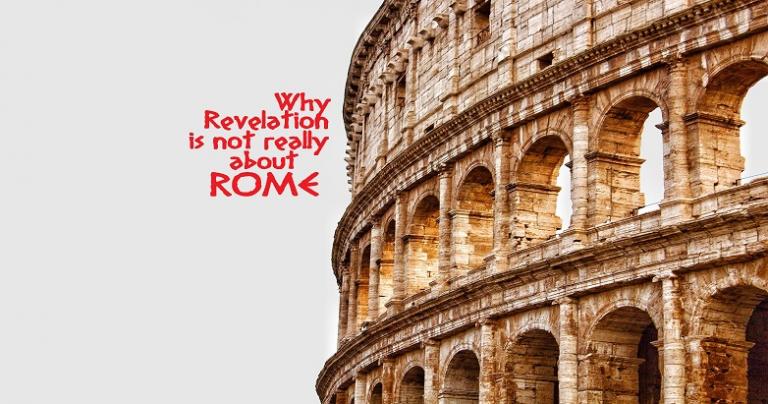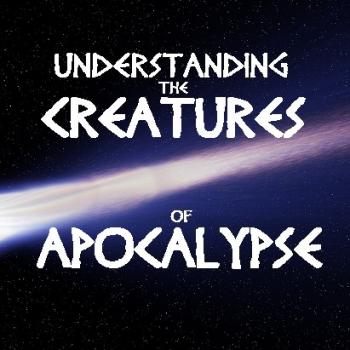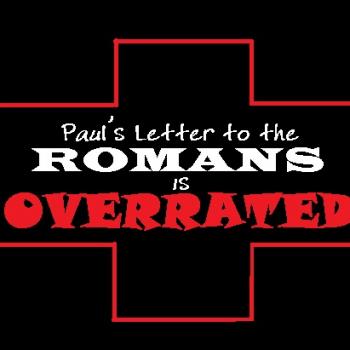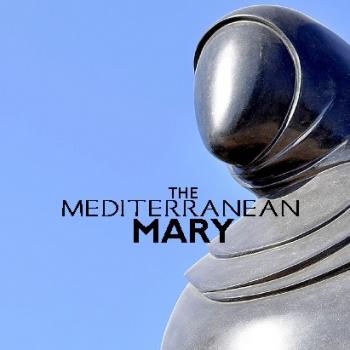
Babylon, the Sea Beast, 666, and everything else in the book of Revelation is not about Nero, Rome, or the Roman Empire.
Following up from our last post, some people insist that Revelation be understood as promising that God will judge polytheistic Rome. This is because the Empire persecuted Christians. To readers like these, the villain of Revelation is Rome. But is there any evidence for this?
Christians in the 21st century need to understand something about words, language, and symbols. When things, like the Book of Revelation, move around in place and time, they pick up new meanings and associations. Thus, one and the same set of symbols can have at least two different meanings. The Middle Eastern, Mediterranean library called “the Bible” is full of symbols. It has multiple meanings. This is especially true of the book of Revelation. So too words and names that equal 666.
Should a Christian see the numbers three and one, he might think of the Trinity—whereas a non-Christian might imagine something entirely different. And should you pull out an apple, bread, and wine, a Catholic might be reminded of Original Sin and Eucharist. But to someone else, it might only mean lunch!
Sure, at some point some Christians understood that “Revelation” was all about Rome, and that Emperor Nero was the Beast and “666.” But these Christians with their assigned meanings came much after what John the Seer (Revelation 1:9) his Compiler (Revelation 1:1-3). What did the Beast mean to John the Seer? Watch the video…
The Origins of the Rome Interpretation
The idea that Revelation was all about Rome and the Roman Empire got an early start. Constantine converted. The Emperor commissioned fifty Bibles for his new capital polis, Constantinople. His advisor and political architect, Eusebius (rather hastily around 331 CE) made an “executive decision.” Without pope or Council, the good bishop included Revelation and six other documents into these new Bibles for needs of the Empire.
That’s right! Eusebius’ reasons were political rather than theological or historical, folks! So too the construction of our New Testament. So next time you read Revelation, or “Hebrews,” or “James,” “2 Peter,” “2 John,” “3 John,” or “Jude,” thank the politically astute bishop, Eusebius. And let’s all realize that God works in the mess. Be thankful for that! Cause it’s messy indeed!
Taking all of that, stir in some collective memory. Fourth century post-Constantinian Christians remembered the vile first century tyrant Nero in new, re-contextualized ways. They saw Nero through the lens of relatively recent Decian and Diocletianic Empire-wide persecutions. All of this helps produce and hand on a new Christian understanding where Nero became the Beast of Revelation 13:1-18. After all, didn’t his name equal 666 in Aramaic? Er, I mean 616 in Latin?
Please understand folks that this re-contextualizing of Revelation 13 was heavily allegorical and spiritual. But our Church teaches that before the Spiritual Sense, the Literal Sense comes first. The Literal Sense is what the human author had in mind to communicate to his audience. Folks, despite our Constantinian ancestors in the faith, John didn’t have Nero on his radar screen when he wrote Revelation 13. Again, watch the video above.
Babbling About Beastly Babylon
Turning to Revelation 17:1-18 we enter another set of visions, this time depicting the post-Flood period and the Tower of Babel/Babylon. Again we encounter the same Beast with seven heads and ten horns of 13:1. Therefore this story is a continuation from the pre-Flood times in Revelation 12.
Reading Revelation 13—16, the Sky Beast over the Sea, vice-regent to the Dragon, controls his lackey, the Sky Beast over the Land (the constellation Lupus). Now in Revelation 17, presumably still representing the Dragon, the Sea Beast controls the Woman.
Pretexts & Proof-texts
Some who insist that this Beast must represent Nero, Rome, the Roman Empire, or all of the above, proof-text their position from this chapter—
Revelation 17:9-10
Here is a clue for one who has wisdom. The seven heads represent seven hills upon which the woman sits. They also represent seven kings: five have already fallen, one still lives, and the last has not yet come, and when he comes he must remain only a short while.
These people argue that Rome was built on seven hills—the Aventine, the Caelian, Capitoline, Esquiline, Palatine, Quirinal, and Viminal. Therefore, the matter is settled, the case is closed. John obviously was writing about Rome!
Not so fast. Rome was not the only ancient polis built on seven hills. People can make similar counts with other locations, like Jerusalem and Babylon. By the way, what exactly is a “hill” or a “wilderness” according to first century people? We are not talking National Geographic here, folks.
Revelation? Or Genesis?
The Beast has ten horns. Both older Mesopotamian tradition and Israelite lore held that ten kings ruled before the Flood (Genesis 1—8). Scholars Bruce Malina and John Pilch cite Berossus of Babylon who says that seven wise monsters (apkallu) instructed the antediluvians all sorts of arts and crafts. Israelites had their own takes on this, with Genesis 6:1-4 and 1 Enoch. This helps explain the collections of ten and seven in John’s visions.
Although it does take creative liberties, Darren Aronofsky’s brilliant 2014 film “NOAH” offers a glimpse of this in the following clip. Both Aronofsky and John the Seer were heavily influenced by 1 Enoch—
Seven Hills, Seven Kings, Seven Days
The sky servant tells John the seer about the seven hills representing the seven king in Revelation 17. These are the planets or wanderers on the Ecliptic Pathway in the sky. They are the same planets (non-scientific definition!) which name our weekdays—Sun, Moon, Wargod, Fastgod, Thundergod, Lustgoddess, and Saturn. Nero was human; these sky-rulers are not. So, in context, here is an explanation earlier than and different from the one offered by early 4th and 5th century Christians.
Babylon ≠ Rome!
When we read John the Seer and his Compiler honestly and respectfully, we find zero clear, unambiguous, or direct references to either Rome or to Roman emperors. I recognize that for today’s theologians and exegetes this is the favorite historical reference. Too bad this tenuous hypothesis, with the exception of gratuitous insistence, lacks any evidence.
When Israelite writers of the period refer to Rome as Babylon (4 Ezra, Apocalypse of Baruch, Sibylline Oracles 5 and 1 Peter 5:13), there is no hostility or pejorative overtones. They are just calling Rome a place of exile. How different that is from John’s attitude against his Babylon in Revelation! This author is extremely hostile to Babylon! And his Babylon is Babylon, and not Rome at all.
However, could it be said that John makes the destruction of Babel/Babylon, a ruined heap in his day, into an allegory for another city? Perhaps he does, but then this would be Jerusalem, not Rome. To John, destroyed Jerusalem was like Sodom, Egypt, and Babylon. Why? Jerusalem was deceived.
For John, the biggest problem in the world is deception. According to Israelite tradition, the first city of humankind after the Flood, Babel (in Greek, Babylon), is the mother of all deception. Babel/Babylon was the mother of all cities. That includes the old, destroyed Jerusalem. But never fear, says John to his fellow Israelite astral prophets. The old will soon be replaced by the Celestial Jerusalem.












